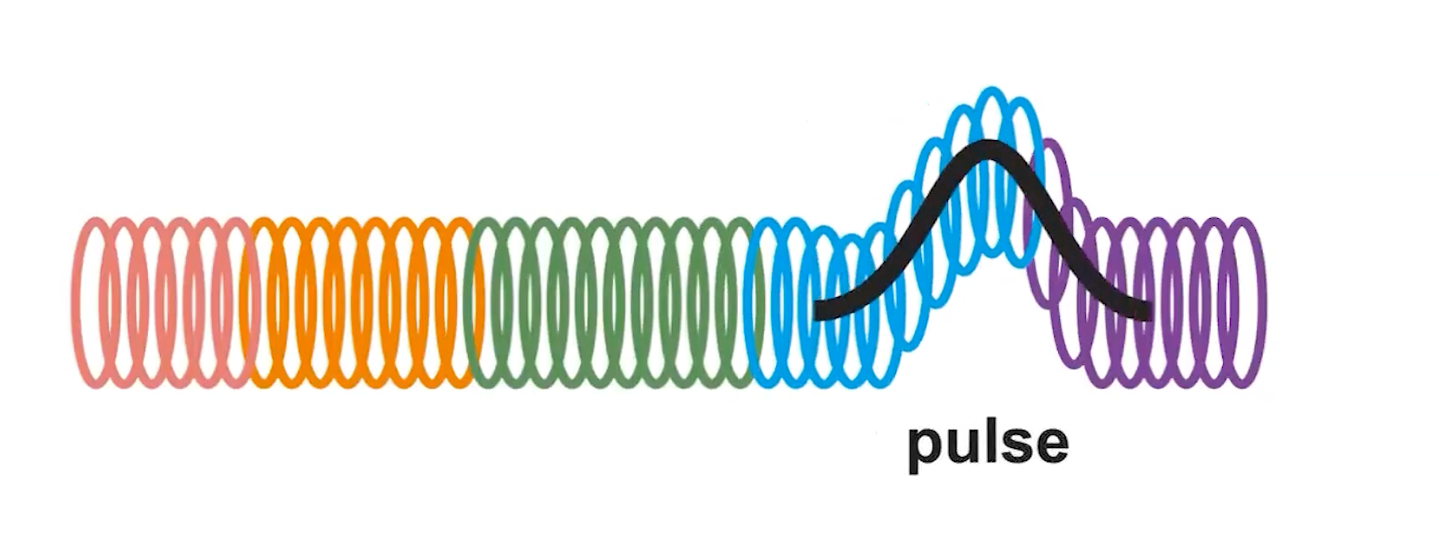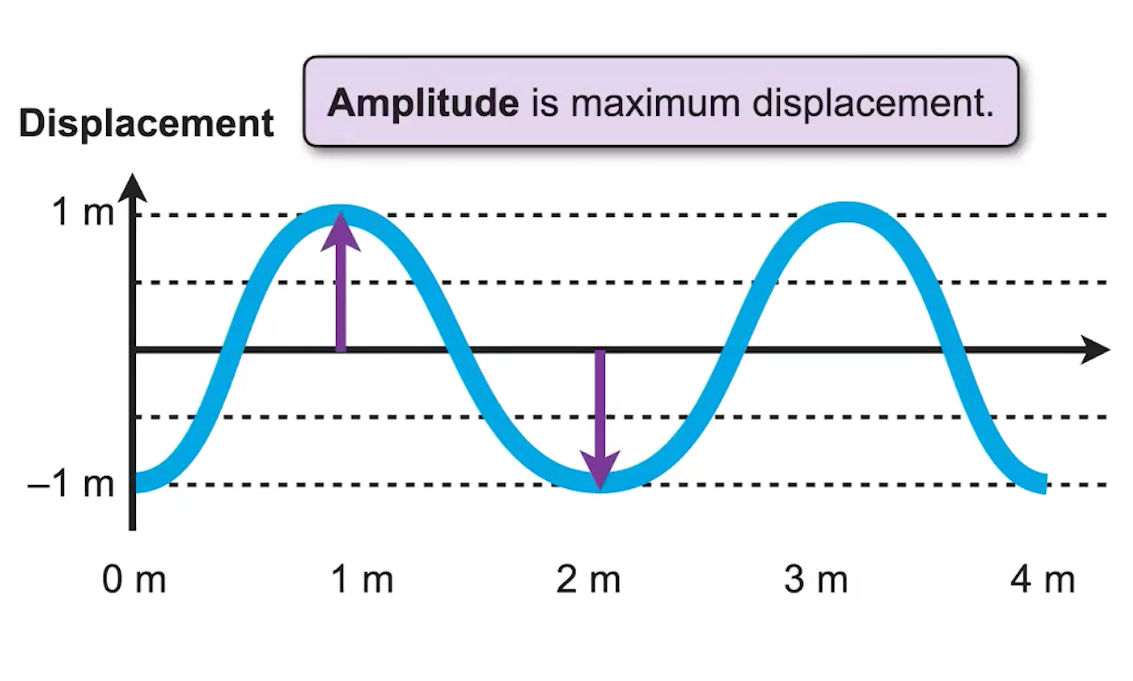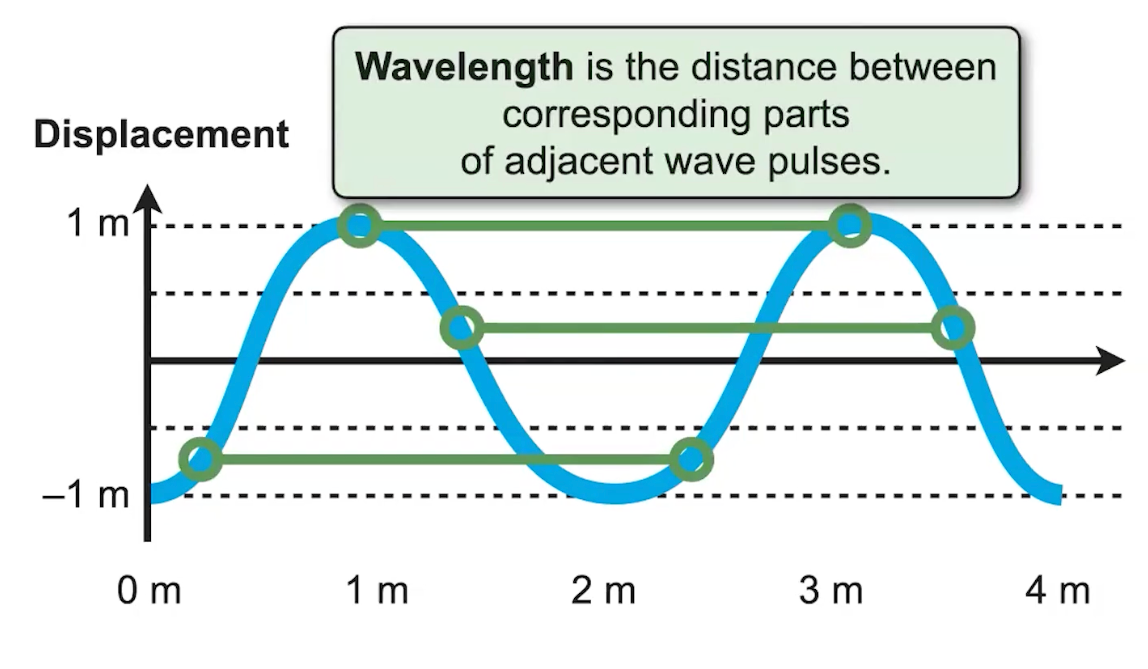Waves help transfer energy between a sender and a receiver without transferring any matter.
A wave pulse is a single disturbance that transfers energy without transferring matter. Waves are essentially composed of successive wave pulses. Waves and pulses move by propagating, which means each small section of the wave causes the next small section to move.

Types of Waves
There are two types of waves we will be dealing with:
- Mechanical Waves: require a medium to flow through, and they work as both longitudinal and transverse waves. For example, sound waves in air or ripples in a puddle of water or wiggles along a spring
- Electromagnetic Waves: do not require a medium to flow through, and only appear as transverse waves. For example, warmth of wire or signals from a radio signals from distant galaxies through space
Similarly:
- Longitudinal Wave: the motion of the medium is parallel to the propagation of the wave. For example, the coil moves horizontally while the waves move horizontally
- In drawing a longitudinal wave, the dense parts are called compressions and the spread out parts are called rarefactions

- In drawing a longitudinal wave, the dense parts are called compressions and the spread out parts are called rarefactions
- Transverse Wave: the motion of the medium is perpendicular to the propagation of the wave. For example, the coil moves vertically as the waves move horizontally
- In drawing a transverse waves, the high points are called crests and the low points are called troughs

- In drawing a transverse waves, the high points are called crests and the low points are called troughs
The amplitude is the maximum displacement of the wave from the equilibrium position. An amplitude of a sound wave is equal to the loudness of the soundwave. Any single point on a periodic wave will move a distance of four amplitudes in a complete cycle.

The wavelength is the distance between any two corresponding points of adjacent wave pulses:

Wave Speed
The speed of waves depends on the medium and the type of wave moving through the medium, and it is calculated using the simple velocity formula: . Essentially, the speed of a wave depends on the medium and not on the wave itself. As a result, amplitude and pulse width do not affect the velocity of a wave. However, properties of the wave’s medium does affect the speed of the wave. For example, on a string or a spring, the speed of the wave depends on the tension and the linear density, but not the amplitude or the pulse width.